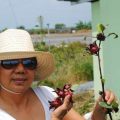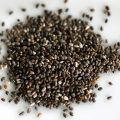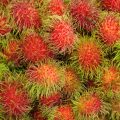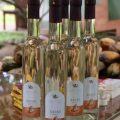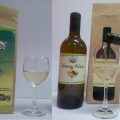Products from a certain plant that looks a lot like the gumamela have been constantly featured in different agricultural trade shows and activities. However, many people may still be unaware of what it is, what it looks like, and what benefits it can give to us.
What is roselle?
One of the highlights during the 20th Farmers’ Field Days and Technology Forum of the Northern Mindanao Agricultural Research Center (NOMIARC) held at Malaybalay City, Bukidnon was value-adding technologies for different commodities–one of which is wine production technology from the roselle plant. According to Ms. Fe Abragan, a senior agriculturist in NOMIARC, when Department of Agriculture (DA) Secretary Proceso Alcala graced a field day back in 2012, he urged the station to promote roselle. This is in line with the DA’s thrust of promoting indigenous plants for health and wellness and recognizing the need to explore the untapped potentials of such plants for them to be fully utilized, promoted, and more importantly to be developed as foods and sources of materials in the nutraceutical, pharmaceutical, and cosmeceutical industries.
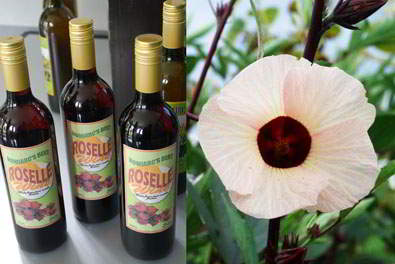
Roselle is included in the book of Dr. Roberto Coronel titled “Important and Underutilized Edible Fruits of the Philippines”. In the book, roselle was described as an erect, branched, herbaceous plant that grows to about 1 m high. It bears yellowish or pinkish large flowers and its fruits are enclosed in its large and red fleshy calyx. Roselle was first introduced in the Philippines during the 1900s where it has been cultivated in some home gardens and has adapted well in the country’s humid tropical climate.
Regarded as a low input and low maintenance crop, roselle requires less management but is very productive. Maintenance is only through pruning as it easily matures. Reproductive stage occurs in about 4-6 months. It is believed to be beneficial in an intercropping system, especially with legumes. The plant is considered to be an underutilized species that has economic importance and potentials for fruit processing which can provide farmers with alternative sources of food and income.
How useful is roselle?
Many countries in the world have been cultivating roselle for many purposes such as food, fuel, fiber, lipids, and decoration, among many others. It is popularly used in making cooling beverages and wines, and in making delicious desserts such as jams, jellies, puddings, cakes, pies and others. When dried, it is processed into a nutritious tea. Its tender leaves and stalks can also be eaten as a vegetable in salads, or as seasoning for various delicacies. In the country, it was found to be used as a souring agent in dishes such as sinigang. The stems are seen as potential raw materials for charcoal and as sources of bast jute-like fibers. Meanwhile, its seeds are rich in linoleic acid, a fatty acid essential for nutrition, and can be potential sources of vegetable oils.
Many of its parts are also believed to be of medicinal value. In Guinea, its leaves are used as a diuretic and sedative, while the Angolans found it as a useful remedy for coughs. Its seeds are used for debility in Myanmar and as diuretic and laxative in Taiwan. In the Philippines, its bitter root is used as aperitive and tonic. Additionally, the flavonoids contained in roselle can be used to naturally color foods such as yoghurt and rums.
Various studies in many parts of the world have also been conducted which are aimed at studying the plant’s biological activities. Results have showed promising outcomes such that roselle can provide protection from atherosclerosis, and are regarded to possess anticarcinogenic and high antioxidant properties.
NOMIARC, as a research station that believes in the potentials of the plant, is conducting research initiatives to further explore and promote the plant. As of the moment, the station is subjecting their roselle wine for further analysis before making it available to the public. It is also now in the process of submitting a proposal to the Bureau of Agricultural Research for the product utilization and processing of roselle into products such as tea, jam, and candies. NOMIARC also provides seeds to interested farmers and individuals priced at P5 per pack.### (Anne Camille B. Brion)
Source: bar.gov.ph
